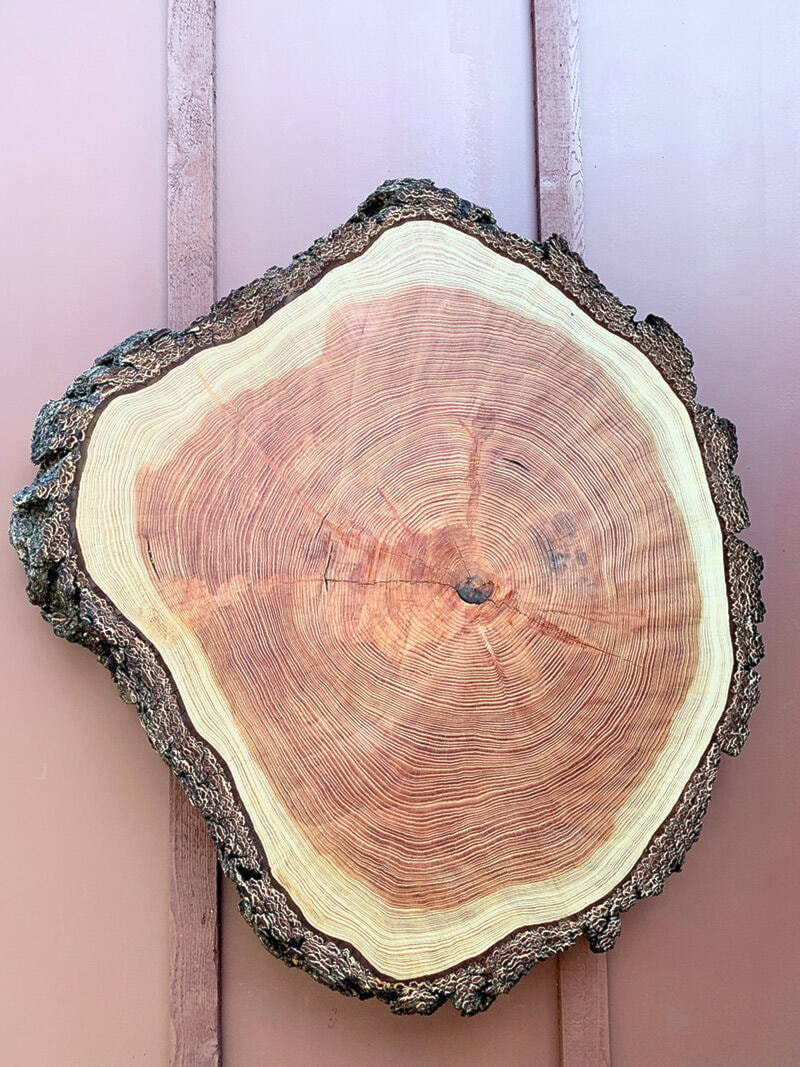Emma Wilton | Contributed
Driving down Phillips Road, you may notice the Sooke Region Museum’s large tree round, or if you are on the highway, you may catch a glimpse of the round on the side of our blacksmith shop.
Yes, these are tree rounds, but there is much more to them than just what meets the eye. In the museum’s collection, we have multiple tree rounds, which can give us a look into the past.
Looking at a tree round, there is lots of information to gather. Most likely, you were told that if you count the tree rings, you can tell the tree’s age when it was cut down. But, there is much more to learn about the tree’s life than just its age.
You will see two different rings within a tree’s rings, light and dark. Light coloured tree rings represent wood that grew in the spring and summer, while dark-coloured rings represent wood that developed in the late summer and fall. Together, one light ring and one dark ring represent a full year’s growth. The wider the growth ring, the more resources the tree received. Whereas the more narrow the growth ring, most likely the tree experienced drought or disease.
Archaeologists can use ring patterns in a building’s timbers to estimate construction dates for old buildings.
Right now, there are three tree rounds on display at the museum. Recently put on display is one of our smaller tree rounds, a fir tree round cut from the trees standing in front of the Evergreen Centre.
To display the tree round, multiple processes had to be completed. First, it was sanded down to make a smooth face to display. Then, a layer of clear wood preservative was added to help protect it from the elements. This tree round may be the best one to take a look at to try to see for yourself the tree’s growth rings and what its life was like.
Our next two on display are huge compared to the fir tree round.
On display by Phillips Road is our Douglas-fir tree round. It is approximately three metres in diameter and has about 1,227 growth rings. This means the tree’s life started in 745 CE. At this time, the Mayan civilization was beginning to collapse (800CE). It was fell in 1976 at Weeks Lake.
The next is our Sitka spruce round. Sitka Spruce tree rounds are distinct from the others due to the unique way the tree round is shaped. At our Lord Western display, the round boasts a diameter of 4.5 metres and has approximately 478 growth rings. This tree’s life would have started in around 1500, and it was fell in 1979 in the Carmanah Valley.
So the next time you are at the museum, take a look for yourself and see how many growth rings you can count on the tree rounds.
•••
Emma Wilton is the Sooke Region Museum’s collections and exhibits manager.
editor@sookenewsmirror.com
Like us on Facebook and follow us on Twitter
